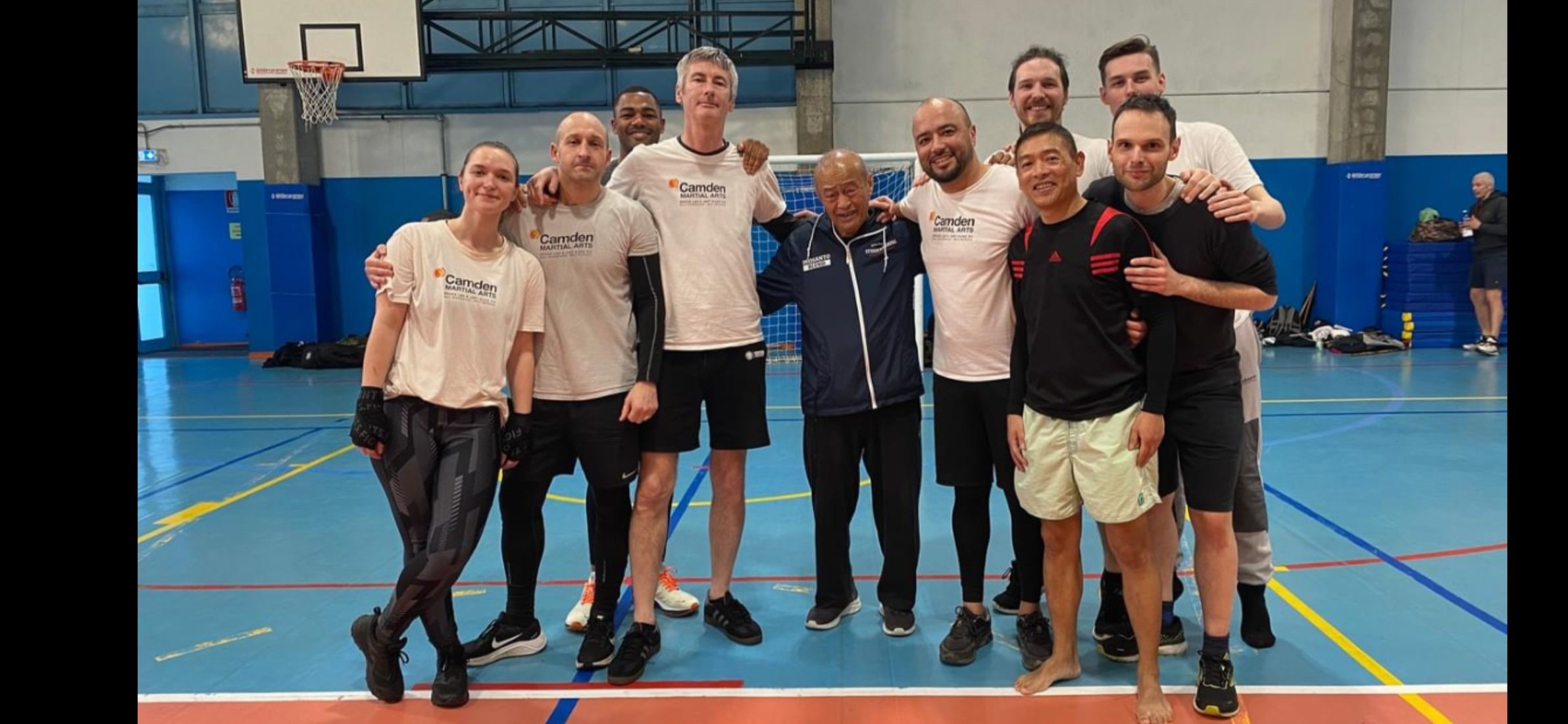Jeet Kune Do is an eclectic, hybrid approach to the martial arts initially developed by Bruce Lee.
Bruce Lee had received a classical Wing Chun Kung Fu training in his native Hong Kong before travelling to the US, where he founded Jeet Kune Do (JKD) in 1964. He had always been told that Wing Chun was the best fighting system, and that it could beat any other style. A small, half-Chinese man in a less enlightened age meant he suffered some racism, but he was never one to back down and found his ability to fight was tested often. He discovered that his Wing Chun was very useful, but sometimes a little limited when fighting against a wide variety of alternative systems – many Americans practiced Western boxing and many wrestle to a high level in college. A natural philosopher, his experiences eventually led him to the conclusion that fighting style should be a function of personal development, rather than trying to slot yourself into some else’s moves and techniques. Some techniques work for tall skinny people that don’t work for short stocky people and vice versa, so there was no ultimate system that was going to defeat all of the people, all of the time… ‘It’s the artist, not the art’.
At Camden Martial Arts we focus mostly on stand-up fighting and begin with a striking base similar to that of Muay Thai – the devastating Thai kickboxing art that is also known as the ‘Science of Eight Limbs’ as it combines punching and kicking with elbows and knees. Here's me at my black belt test with my Muay Thai instructor and twice European champion, Winston Fraser:
There’s a little Wing Chun trapping, and we add some funky stuff like wristlocks and joint manipulation which are largely from Filipino Kali. Bruce Lee’s best friend and training partner was a Filipino American called Dan Inosanto and the Filipino arts remain an enormous influence on the way Jeet Kune Do is taught and practiced. This is largely due to the flow developed from their weapons training – stick fighting has been a tradition in the Philippines for hundreds of years. It was actually Guro Dan Inosanto who taught Bruce Lee how to use nunchuks. If you want to know what Kali looks like, it’s what Jason Bourne does in the first three Bourne films (the fight coordinator was Jeff Imada, a Dan Inosanto student). I went to train with Guro Dan again in March 2024 and took a group of students to Italy to train with him. I had the huge honour of being made an instructor under him.
My main teacher and mentor over the years has been Guro Bob Breen. Having already explored cross-training in arts such as Western Boxing and Judo, Guro Bob was captain of the British All Styles Karate Team in 1974. They fought against Japan and won. No one had ever beaten the Japanese at their own game before, and Guro Bob has been at the vanguard of the European martial arts scene ever since. He hosted Guro Dan Inosanto in 1979 which was a European first, and these days he remains at the cutting edge of the martial arts world with his amazing 4D Combat system: JKD simplified.
I started training with Guro Bob in 2001 after a very nasty accident, following which I decided I should take my health more seriously. I thought martial arts would be the most interesting way to get into shape and get my life on track. I’ve never looked back! I now have the great honour of being an affiliate 4D Combat instructor under Bob, and I’m also certificated to teach jeet kune do, Jun Fan gung fu and Filipino kali, directly by Dan Inosanto.
All in the spirit of personal development, at Camden Martial Arts we aim to make you a happier, fitter, stronger, more functional human being. You’ll learn not just how to punch and kick, but also strategies on how to avoid confrontation in the first place. You’ll feel less stressed and you’ll meet some nice people as we all get better together.
The first lesson is always free, or you can just have a look if you like. Come along and say ‘Hi’!
Email camdenmartialarts@gmail.com or call 07876 660 375 with any questions.
Click 'HOME' at the top of the page for class times and venue details.




